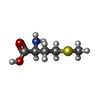+ Open data
Open data
- Basic information
Basic information
| Entry | Database: PDB / ID: 4z64 | |||||||||
|---|---|---|---|---|---|---|---|---|---|---|
| Title | the plant peptide hormone receptor complex in arabidopsis | |||||||||
 Components Components |
| |||||||||
 Keywords Keywords | HORMONE / hormone receptor complex | |||||||||
| Function / homology |  Function and homology information Function and homology informationmicrosporogenesis / floral organ abscission / regulation of defense response / pollen maturation / brassinosteroid mediated signaling pathway / peptide receptor activity / guanylate cyclase / guanylate cyclase activity / embryo development ending in seed dormancy / transmembrane receptor protein serine/threonine kinase activity ...microsporogenesis / floral organ abscission / regulation of defense response / pollen maturation / brassinosteroid mediated signaling pathway / peptide receptor activity / guanylate cyclase / guanylate cyclase activity / embryo development ending in seed dormancy / transmembrane receptor protein serine/threonine kinase activity / receptor serine/threonine kinase binding / Golgi organization / transmembrane receptor protein tyrosine kinase activity / receptor protein-tyrosine kinase / protein autophosphorylation / protein phosphorylation / protein kinase activity / non-specific serine/threonine protein kinase / signaling receptor binding / innate immune response / protein serine kinase activity / protein serine/threonine kinase activity / endoplasmic reticulum membrane / protein-containing complex / mitochondrion / ATP binding / identical protein binding / plasma membrane Similarity search - Function | |||||||||
| Biological species |   | |||||||||
| Method |  X-RAY DIFFRACTION / X-RAY DIFFRACTION /  SYNCHROTRON / SYNCHROTRON /  MOLECULAR REPLACEMENT / Resolution: 2.659 Å MOLECULAR REPLACEMENT / Resolution: 2.659 Å | |||||||||
 Authors Authors | Chai, J. / Wang, J. / Han, Z. | |||||||||
 Citation Citation |  Journal: Nature / Year: 2015 Journal: Nature / Year: 2015Title: Allosteric receptor activation by the plant peptide hormone phytosulfokine Authors: Wang, J. / Li, H. / Han, Z. / Zhang, H. / Wang, T. / Lin, G. / Chang, J. / Yang, W. / Chai, J. | |||||||||
| History |
|
- Structure visualization
Structure visualization
| Structure viewer | Molecule:  Molmil Molmil Jmol/JSmol Jmol/JSmol |
|---|
- Downloads & links
Downloads & links
- Download
Download
| PDBx/mmCIF format |  4z64.cif.gz 4z64.cif.gz | 175.9 KB | Display |  PDBx/mmCIF format PDBx/mmCIF format |
|---|---|---|---|---|
| PDB format |  pdb4z64.ent.gz pdb4z64.ent.gz | 135.5 KB | Display |  PDB format PDB format |
| PDBx/mmJSON format |  4z64.json.gz 4z64.json.gz | Tree view |  PDBx/mmJSON format PDBx/mmJSON format | |
| Others |  Other downloads Other downloads |
-Validation report
| Summary document |  4z64_validation.pdf.gz 4z64_validation.pdf.gz | 770.8 KB | Display |  wwPDB validaton report wwPDB validaton report |
|---|---|---|---|---|
| Full document |  4z64_full_validation.pdf.gz 4z64_full_validation.pdf.gz | 787.6 KB | Display | |
| Data in XML |  4z64_validation.xml.gz 4z64_validation.xml.gz | 20.2 KB | Display | |
| Data in CIF |  4z64_validation.cif.gz 4z64_validation.cif.gz | 29.3 KB | Display | |
| Arichive directory |  https://data.pdbj.org/pub/pdb/validation_reports/z6/4z64 https://data.pdbj.org/pub/pdb/validation_reports/z6/4z64 ftp://data.pdbj.org/pub/pdb/validation_reports/z6/4z64 ftp://data.pdbj.org/pub/pdb/validation_reports/z6/4z64 | HTTPS FTP |
-Related structure data
| Related structure data |  4z5wSC  4z61C  4z62C 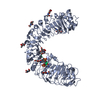 4z63C S: Starting model for refinement C: citing same article ( |
|---|---|
| Similar structure data |
- Links
Links
- Assembly
Assembly
| Deposited unit | 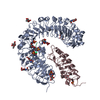
| |||||||||
|---|---|---|---|---|---|---|---|---|---|---|
| 1 |
| |||||||||
| 2 | 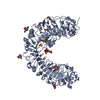
| |||||||||
| Unit cell |
| |||||||||
| Components on special symmetry positions |
|
- Components
Components
-Protein , 2 types, 2 molecules AC
| #1: Protein | Mass: 69884.008 Da / Num. of mol.: 1 / Fragment: UNP resides 24-648 Source method: isolated from a genetically manipulated source Source: (gene. exp.)  Production host: Insect cell expression vector pTIE1 (others) References: UniProt: Q9ZVR7, non-specific serine/threonine protein kinase |
|---|---|
| #2: Protein | Mass: 23981.150 Da / Num. of mol.: 1 / Fragment: UNP residues 1-213 Source method: isolated from a genetically manipulated source Source: (gene. exp.)   Insect BA phytoplasma (bacteria) Insect BA phytoplasma (bacteria)References: UniProt: Q94AG2, receptor protein-tyrosine kinase, non-specific serine/threonine protein kinase |
-Protein/peptide / Non-polymers , 2 types, 5 molecules P

| #3: Protein/peptide | Mass: 846.879 Da / Num. of mol.: 1 / Source method: obtained synthetically / Source: (synth.)  |
|---|---|
| #6: Chemical | ChemComp-SO4 / |
-Sugars , 2 types, 10 molecules 
| #4: Polysaccharide | 2-acetamido-2-deoxy-beta-D-glucopyranose-(1-4)-2-acetamido-2-deoxy-beta-D-glucopyranose Source method: isolated from a genetically manipulated source |
|---|---|
| #5: Sugar | ChemComp-NAG / |
-Details
| Has protein modification | Y |
|---|
-Experimental details
-Experiment
| Experiment | Method:  X-RAY DIFFRACTION / Number of used crystals: 1 X-RAY DIFFRACTION / Number of used crystals: 1 |
|---|
- Sample preparation
Sample preparation
| Crystal | Density Matthews: 5 Å3/Da / Density % sol: 75.4 % |
|---|---|
| Crystal grow | Temperature: 291 K / Method: vapor diffusion, hanging drop / Details: 0.1 M sodium acetate pH4.5, 2.0 M (NH4)2SO4 |
-Data collection
| Diffraction | Mean temperature: 100 K |
|---|---|
| Diffraction source | Source:  SYNCHROTRON / Site: SYNCHROTRON / Site:  SSRF SSRF  / Beamline: BL17U / Wavelength: 1 Å / Beamline: BL17U / Wavelength: 1 Å |
| Detector | Type: BRUKER SMART 6500 / Detector: CCD / Date: Sep 9, 2014 |
| Radiation | Protocol: SINGLE WAVELENGTH / Monochromatic (M) / Laue (L): M / Scattering type: x-ray |
| Radiation wavelength | Wavelength: 1 Å / Relative weight: 1 |
| Reflection | Resolution: 2.65→99 Å / Num. obs: 49253 / % possible obs: 96.8 % / Redundancy: 4.2 % / Net I/σ(I): 15.5 |
- Processing
Processing
| Software |
| |||||||||||||||||||||||||||||||||||||||||||||||||||||||||||||||||||||||||||||||||||||||||||||||||||||||||||||||||||||||||||||||||||||
|---|---|---|---|---|---|---|---|---|---|---|---|---|---|---|---|---|---|---|---|---|---|---|---|---|---|---|---|---|---|---|---|---|---|---|---|---|---|---|---|---|---|---|---|---|---|---|---|---|---|---|---|---|---|---|---|---|---|---|---|---|---|---|---|---|---|---|---|---|---|---|---|---|---|---|---|---|---|---|---|---|---|---|---|---|---|---|---|---|---|---|---|---|---|---|---|---|---|---|---|---|---|---|---|---|---|---|---|---|---|---|---|---|---|---|---|---|---|---|---|---|---|---|---|---|---|---|---|---|---|---|---|---|---|---|
| Refinement | Method to determine structure:  MOLECULAR REPLACEMENT MOLECULAR REPLACEMENTStarting model: 4Z5W Resolution: 2.659→48.913 Å / SU ML: 0.31 / Cross valid method: THROUGHOUT / σ(F): 0 / Phase error: 29.16 / Stereochemistry target values: ML
| |||||||||||||||||||||||||||||||||||||||||||||||||||||||||||||||||||||||||||||||||||||||||||||||||||||||||||||||||||||||||||||||||||||
| Solvent computation | Shrinkage radii: 0.9 Å / VDW probe radii: 1.11 Å / Solvent model: FLAT BULK SOLVENT MODEL | |||||||||||||||||||||||||||||||||||||||||||||||||||||||||||||||||||||||||||||||||||||||||||||||||||||||||||||||||||||||||||||||||||||
| Refinement step | Cycle: LAST / Resolution: 2.659→48.913 Å
| |||||||||||||||||||||||||||||||||||||||||||||||||||||||||||||||||||||||||||||||||||||||||||||||||||||||||||||||||||||||||||||||||||||
| Refine LS restraints |
| |||||||||||||||||||||||||||||||||||||||||||||||||||||||||||||||||||||||||||||||||||||||||||||||||||||||||||||||||||||||||||||||||||||
| LS refinement shell |
| |||||||||||||||||||||||||||||||||||||||||||||||||||||||||||||||||||||||||||||||||||||||||||||||||||||||||||||||||||||||||||||||||||||
| Refinement TLS params. | Method: refined / Origin x: -53.4774 Å / Origin y: -33.4835 Å / Origin z: -8.2839 Å
| |||||||||||||||||||||||||||||||||||||||||||||||||||||||||||||||||||||||||||||||||||||||||||||||||||||||||||||||||||||||||||||||||||||
| Refinement TLS group | Selection details: all |
 Movie
Movie Controller
Controller



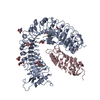



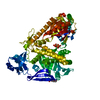
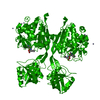

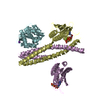
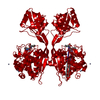

 PDBj
PDBj





